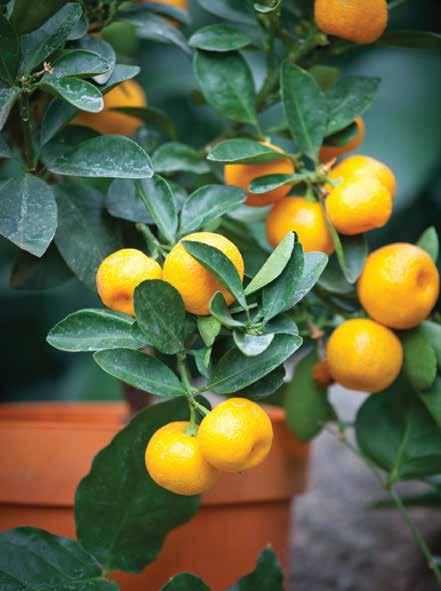
3 minute read
Plants on Your Plate
PLANTS ON YOUR PLATE Acorn Squash
As you begin planning the next special menu in the holiday line-up, acorn squash is a vegetable that is worth considering as an addition on your table. While not as common as the traditional sweet potato, the similar color, flavor, and texture of acorn squash can make a great mix-in with sweet potatoes or stand on its own in a variety of preparations. This is yet another vegetable that I didn’t learn to appreciate until I was an adult, once again demonstrating that our tastebuds are always evolving.
Acorn squash is another member of the Curcurbitaceae plant family, which are related to cucumbers, gourds, and melons. The main difference between summer and winter squash is the state of maturity at harvest. While summer squash is harvested while immature with a tender skin, winter squash is allowed to fully mature and develop a hard rind. The hard rind retains moisture and allows the squash to be stored for several months in cool, dry conditions.
Archaeologists have long considered that squash is one of the oldest known food crops, having found evidence that squash varieties were grown by early civilizations thousands of years ago. Many of the types of squash we know as winter squash are believed to have originated in the Andes mountains, then on through Central American and Mexico and eventually to the United States. Historical documents indicate that squash was served at the first Thanksgiving dinner between Pilgrims and Native Americans at Plymouth Colony in 1621.
Though botanically classified as a fruit, acorn squash is more commonly recognized as a starchy vegetable, thus it is prepared similarly to vegetables like butternut squash and sweet potatoes. The most common variety of acorn squash has a variegated green and orange rind, but they can also be variegated green and cream, orange or even white. All varieties will reveal a golden flesh inside. When selecting squash, look for those that are free from blemishes, have hard, dull skins and are heavy for their size.
Acorn squash is a rich source of vitamins A, C, numerous B vitamins, minerals including manganese, magnesium, and potassium and both soluble and insoluble fiber. These nutrients are shown to be beneficial in eye, skin, and gut health, as well as the prevention and management of chronic diseases like hypertension, heart disease and even certain cancers.
The neutral flavor of acorn squash lends itself well for a variety of preparation methods. The unique fluted shape can be accentuated by cutting the squash crosswise in one-inch slices and removing the seeds in each slice, then lightly drizzling with vegetable oil, and seasoning with herbs before baking. They can also be cut in half and baked without any seasoning, then scooping and pureeing the cooked squash to be used in baked goods like muffins. Baked pureed squash can also be frozen for later use. With their natural ‘bowl’ shape when cut in half (and the seeds removed) stuffing squash with either a sweet filling like apples or savory meat filling is a common practice. When caramelized in the heat of the oven, the natural sweetness of the juice and honey in the recipe below makes a delicious finish to simple dish. Oh…and don’t forget that you can roast the seeds just like pumpkin seeds for a healthy snack!
Honey Orange Acorn Squash
MAKES 6 SERVINGS
INGREDIENTS 3 small acorn squashes 2 Tablespoons orange juice 2 Tablespoons honey 2 Tablespoons butter, melted 1/8 to 1/4 teaspoon ground ginger
DIRECTIONS 1. Preheat oven to 400 degrees. 2. Cut squash in half. Remove seeds and place halves in shallow baking pan. 3. Combine orange juice, honey and butter and mix well.
Divide the mixture (about one tablespoon each) among each squash half. Sprinkle with ginger. 4. Cover pan with aluminum foil to keep steam in and speed cooking. 5. Bake 30 minutes. Remove foil and continue baking 30 minutes more, or until squash is tender and slightly browned.
NUTRITION INFORMATION Calories: 144, Total Fat: 4g, Saturated Fat: 2g, Sodium: 34mg, Carbohydrates: 29g, Fiber: 3g, Protein: 2g
Recipe adapted from MyPlate Kitchen, analyzed by verywellfit.com
DENISE SULLIVAN Nutrition Ninja
Denise Sullivan (@MUExtJacksonCo) is a Nutrition and Health Education Specialist for MU Extension in Jackson County. For research based nutrition and food safety information and programs, call 816-4825850 or visit https://extension.missouri.edu/counties/urban-west-region.






